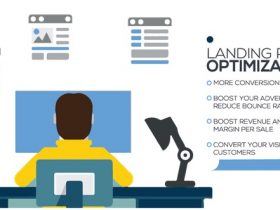Anyone who has ever built a website understands that things usually never go as planned. To be a web designer, you have to get comfortable with debugging issues during the creation of your site. At times, figuring out what is going wrong may become frustrating; however, if you systematically analyze the issue, you will often find the cause faster. Here are some tips on how you can make this happen.
Validate your HTML and CSS
One of the first things you should do when you encounter an issue with your web page is validate you HTML. Even if you have made it a habit to validate your HTML, it is a good idea to double check the HTML when you’re having an issue. This will ensure that the issue is not a simple error, such as a misspelling in the HTML element or property. The same applies to the CSS; if your page uses applications such as JavaScript, PHP, JSP, or other dynamic elements, you should check to be sure the CSS is valid as well.
Test in Multiple Browsers
Sometimes the issue you are seeing in your web page is caused by the browser you are viewing it in. Whether the problem is an issue across all browsers or only one, this actually tells you about what’s going wrong and how you can solve it. For instance, if only one browser is the issue, you can search deeper into the browser to solve the issue, rather than tackling the web page itself.

Simplify the Page, and then Add Back
After you narrow down the issue on your web page, begin subtracting elements from the design until you notice the issue going away. For instance, if you have narrowed the problem down to a specific <div>, along with the CSS that styles it, you can remove one line of CSS at a time. Be sure to test after every removal so that you know when the issue is resolved.
Once you know what is causing the issue, begin adding everything back with the changed items. Be sure to test after every addition. In web design, you would be surprised at how large an impact small change makes overall.
Design to make the Web Page Uniform across Browsers
One of the biggest challenges in web design is making the page look uniform across all browsers. While this may not always be possible, it certainly is the goal for most designers. To accomplish this, begin by designing for what you consider to be the best browser, which includes those that are standards compliant. Once you have these working, start including older browsers that may still be relevant to the audience of your site.
Keep Codes Simple
It is recommended that once you have figured out and fixed all issues on your web page that you prevent them from coming up again later. The easiest way to accomplish this is to keep your HTML and CSS as simple as possible. This does not mean that you have to avoid doing things like create rounded corners simply because the HTML and CSS is complicated. It does mean that you should avoid complex tasks when there is a simpler solution.
Ask for Help
There is a lot of value in asking someone to help you debug issues on your web site. If you have been staring at the same code for a while, it may be best to get another set of eyes on the code to get some more opinions.
F. Aldea is Marketing communications consultant at Linked agency, an Ireland-based advertising consumer experience consultancy that improves agencies in the Ireland generate excellent client experiences.























